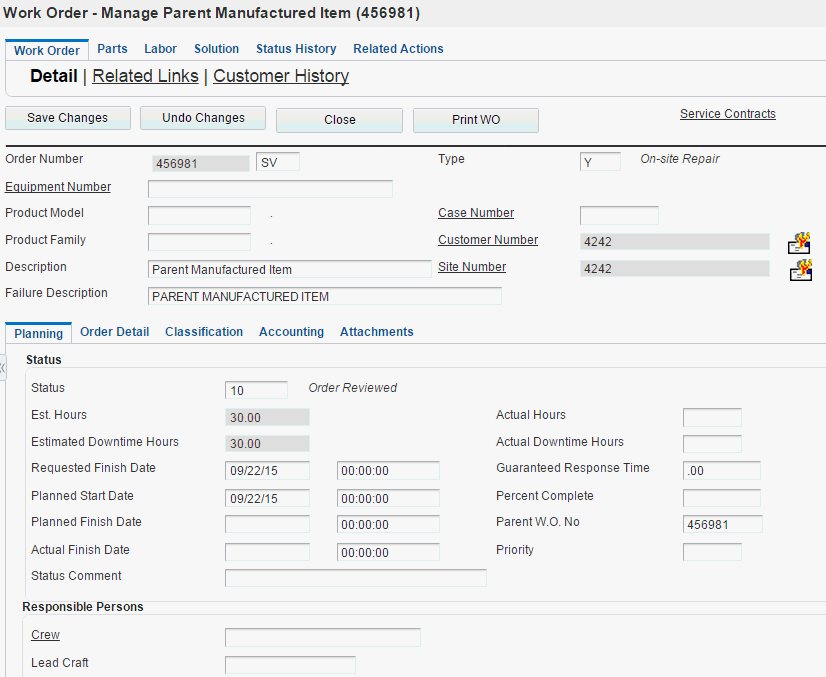Reviewing Work Order Detail (P13714)
Access the Work Order - Manage {Work Order Name} form. Select the Planning tab.

- Status
Enter a UDC (00/SS) that describes the status of a work order, rate schedule, or engineering change order.
- Planned Start Date
Displays the planned start date for the order. The system calculates the planned start date using the work order parts list and labor detail steps and then indicates when the job is ready for scheduling.
- Planned Finish Date
Displays the planned finish date for the order. The system calculates the planned finish date using the work order labor detail steps and indicates when the job should be completed by.
- Actual Finish Date
Enter the date that the work order or engineering change order is completed or canceled.
- Status Comment
Enter a brief description to explain the status of the work order.
- Crew
Enter a user-defined name or number that identifies an address book record for a crew. You can use this field to enter and locate information. If you enter a value other than the address book number (AN8), such as the long address or tax ID, you must precede it with the special character that is defined in the Address Book constants. When the system locates the record, it returns the address book number to the field.
- Lead Craft
Enter an alphanumeric code used to define the lead craft required to complete the work. The value entered is used as the default craft (work center) when new labor detail records are added to the work order.
- Supervisor
Enter a user-defined name or number that identifies an address book record for a supervisor. You can use this field to enter and locate information. If you enter a value other than the address book number (AN8), such as the long address or tax ID, you must precede it with the special character that is defined in the Address Book constants. When the system locates the record, it returns the address book number to the field.
- Parent WO
Enter a number that identifies the parent work order. You can use this number to:
Enter default values for new work orders, such as Type, Priority, Status, and Manager.
Group work orders for project setup and reporting.